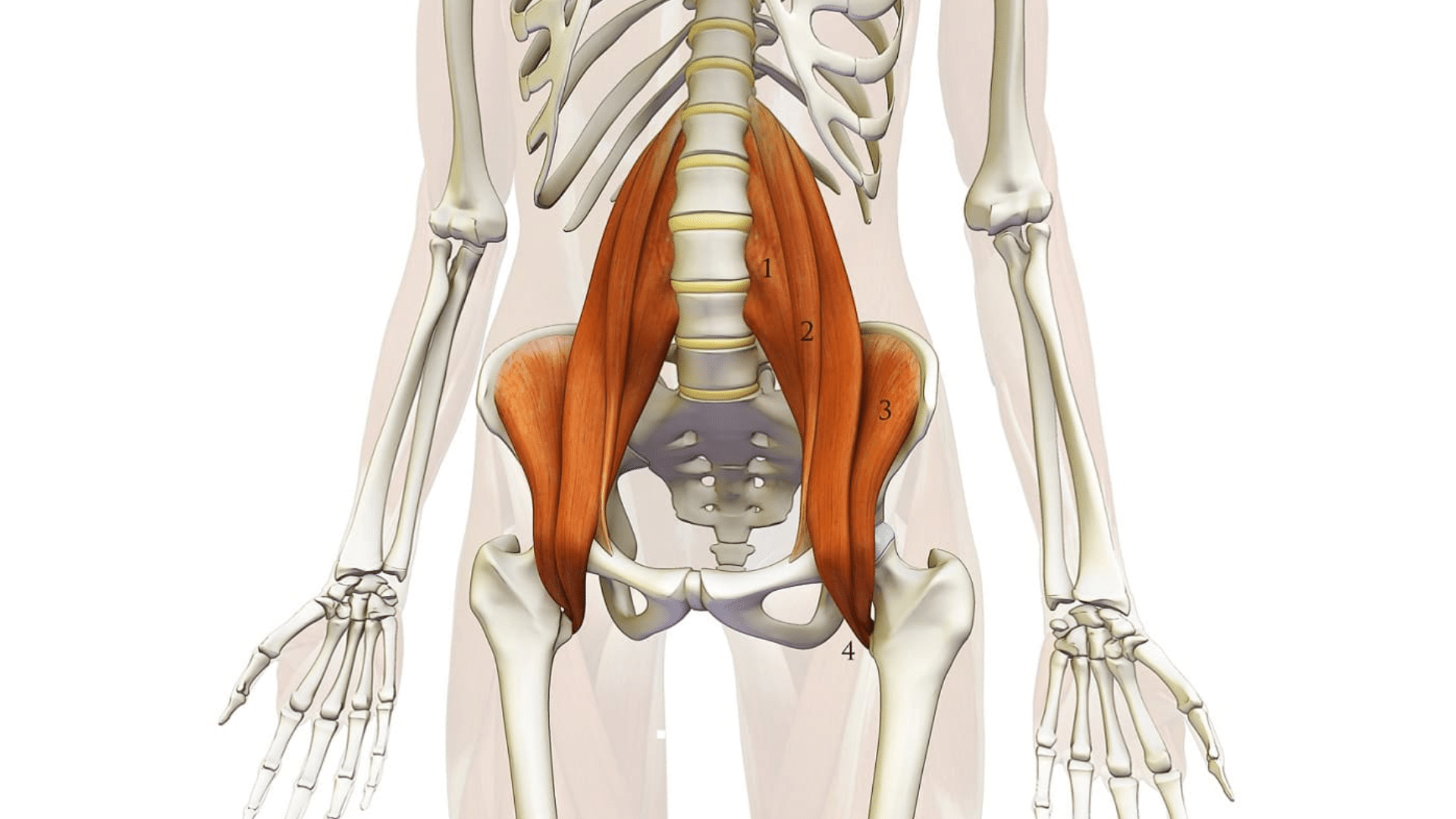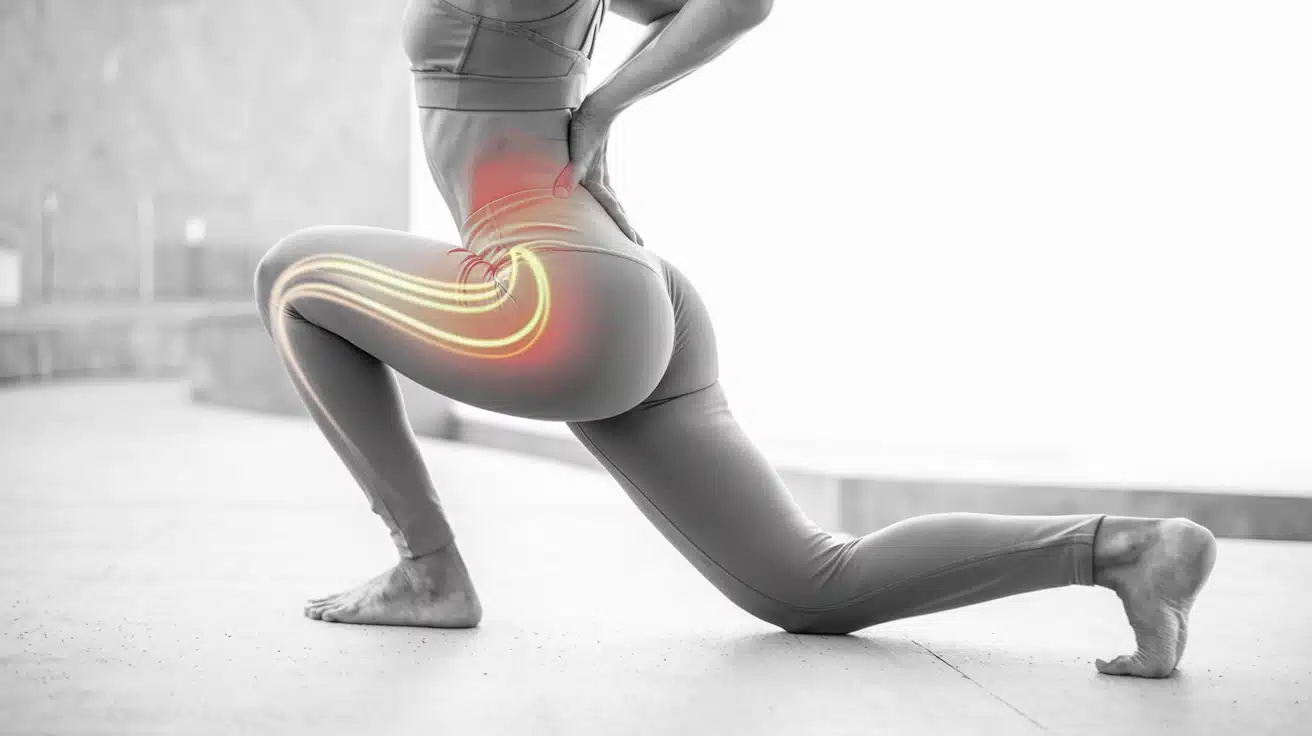Struggling with tightness in your psoas muscle? This deep muscle, connecting your spine to your femur, plays a crucial role in your mobility and posture.
When it tightens, often from stress or prolonged sitting, it can cause pain in your back and hips, making everyday movements more challenging.
In this guide, I’ll walk you through effective techniques to release the psoas muscle and alleviate discomfort.
You’ll find stretching, self-massage, and strengthening exercises, along with holistic practices like yoga and meditation.
What is the Psoas Muscle?
The psoas muscle is a deep muscle located in the lower back, connecting the spine to the femur.
It plays a crucial role in maintaining posture, stabilizing the spine, and allowing movement, such as walking, running, and bending.
Tightness in the psoas can lead to pain in the lower back, hips, and even affect overall posture, making everyday movements more challenging.
Regular stretching and strengthening can help alleviate tightness and reduce pain.
How Emotional and Physical Trauma Affects the Psoas
The psoas muscle is often referred to as the “muscle of the soul” due to its deep connection to emotional stress and trauma.
When a person experiences emotional stress or physical trauma, the psoas can tighten in response. This tension can lead to discomfort in the lower back and hips, creating a cycle of pain.
In many cases, emotional distress can manifest physically through the psoas, making it vital to address both mental and physical aspects when working to release tension and reduce pain.
Symptoms and Causes of Psoas Tightness


Learn how psoas tightness causes back and hip pain, limits movement, and what factors lead to this discomfort.
Symptoms
Psoas tightness often leads to symptoms like lower back pain, hip discomfort, and restricted movement. These issues can make daily activities more difficult, affecting your flexibility and mobility.
You may experience difficulty bending, twisting, or moving freely, and tightness can also cause a sense of stiffness or sharp pain, especially after sitting for long periods or when attempting physical activity.
Causes
Psoas tightness can develop from various factors, including:
- Prolonged Sitting: Sitting for long periods, especially with poor posture, can shorten and tighten the psoas muscle.
- Poor Posture: Slouching or sitting with a rounded lower back can strain the psoas and cause tension.
- Stress: Emotional stress can lead to physical tension, which is often stored in the psoas, resulting in tightness.
- Injury or Overuse: Physical injuries or repetitive movements can strain the psoas muscle, leading to tightness and discomfort.
How to Release the Psoas Muscle: Effective Techniques
A combination of stretching, self-massage, and strengthening exercises can effectively release psoas muscle tension, alleviate discomfort, and improve flexibility and mobility.
I. Stretching Techniques for Psoas Release
To release tightness in the psoas, incorporate stretching techniques such as the Kneeling Lunge Stretch, Supine Psoas Stretch, Pigeon Pose (Modified), and Standing Forward Lunge.
1. Kneeling Lunge Stretch
What it is: A gentle stretch that opens up the front of the hips and targets the psoas directly.
How to do it:
- Kneel on your right knee with your left foot flat in front, forming a 90-degree angle.
- Keep your back straight and gently push your hips forward.
- Hold for 30–60 seconds, then switch legs.
Benefits:
- Directly stretches the psoas and hip flexors
- Improves hip mobility
- Helps counteract tightness from sitting
2. Supine Psoas Stretch
What it is: A stretch done lying down to gently lengthen the psoas without putting pressure on the spine.
How to do it:
- Lie on your back on a bed or bench with one leg hanging off the edge.
- Pull the opposite knee toward your chest while letting the hanging leg drop down.
- Hold for 30–60 seconds, then switch legs.
Benefits:
- Targets the deep psoas muscle
- Gently stretches without loading the lower back
- Great for beginners or those with tight hips
3. Pigeon Pose (Modified)
What it is: A yoga-inspired hip stretch that can be adjusted to avoid stress on the knees.
How to do it:
- Start in a tabletop position and bring your right knee forward toward your right hand.
- Slide your right foot toward your left hip, keeping the shin angled.
- Extend your left leg behind you and lower your torso over your front leg.
- Keep your hips square and hold for 30–60 seconds, then switch sides.
Benefits:
- Opens the hips and stretches the psoas and piriformis
- Helps reduce tension built up from prolonged sitting
- Improves overall hip mobility
4. Standing Forward Lunge
What it is: A dynamic standing stretch that targets the hip flexors and builds strength and balance.
How to do it:
- Stand tall and step your right foot forward into a lunge position.
- Bend the front knee to 90 degrees while keeping your back leg straight.
- Push your hips forward and keep your chest lifted.
- Hold for 30–60 seconds, then switch legs.
Benefits:
- Activates and stretches the psoas and surrounding hip muscles
- Encourages good posture and balance
- Useful as part of a warm-up or cool-down
These stretches target the hip flexors and psoas, helping to lengthen the muscle, alleviate tension, and improve flexibility.
Hold each stretch for at least 30 seconds to fully engage the muscle and promote muscle relaxation. Regular stretching ensures long-term relief and mobility in the hips and lower back.
II. Self-Massage Techniques for Psoas Release
Self-massage can provide deep relief for tight psoas muscles. Foam rolling helps release muscle tightness by rolling gently under the pelvis.
Manual pressure involves using fingers or palms to apply pressure directly to the abdomen, targeting the psoas muscle.
Specialized tools like the Hip Hook are designed for deeper, focused pressure, allowing for a more intense release. Consistently using these techniques can break up muscle tension and improve overall muscle flexibility and function.
III. Strengthening Exercises for Psoas Release
Strengthening exercises help release the psoas muscle while improving overall flexibility and preventing tightness. These exercises target the psoas and surrounding muscles, promoting balance and mobility.
- Hanging Leg Raises: Hang from a pull-up bar and raise your legs towards your chest. This exercise stretches the psoas while engaging the core, improving both strength and flexibility.
- Mountain Climbers: In a plank position, alternate bringing your knees towards your chest in a running motion. This dynamic exercise strengthens the core and psoas, enhancing flexibility and endurance.
- Hip Flexor Exercises: Perform leg lifts while engaging the core, targeting the psoas and surrounding muscles. These exercises help release tension and prevent tightness from recurring.
By consistently practicing these exercises, you help maintain flexibility in the psoas and support long-term pain relief.
Holistic Approaches to Psoas Muscle Release
Holistic practices like yoga, breathing exercises, and meditation are essential for relieving psoas muscle tension and promoting relaxation.
- Yoga: Poses such as Child’s Pose and Cat-Cow stretch the psoas and open the hips, improving flexibility and encouraging muscle relaxation. Yoga also helps reduce mental stress, which can contribute to physical tightness in the psoas.
- Breathing: Deep, diaphragmatic breathing activates the parasympathetic nervous system, triggering relaxation and reducing muscle tension. Slow, controlled breaths during stretches help elongate the psoas and release tightness.
- Meditation: Mindfulness meditation addresses emotional stress stored in the psoas. By focusing on the breath or performing body scans, meditation can help release emotional tension and allow the psoas muscle to relax.
These holistic practices work together to release both emotional and physical tension in the psoas, promoting a balanced, relaxed, and pain-free body.
How to Incorporate These Techniques into Your Routine
Incorporating psoas release techniques into your daily routine will help maintain flexibility and prevent tightness, ensuring long-term relief.
Routine for Psoas Release
To release psoas muscle tension daily, start with a 5-10 minute stretching routine, including kneeling lunges and supine psoas stretches.
Follow up with foam rolling or manual pressure to target the psoas muscle directly. Finish with a few minutes of deep breathing exercises to relax the body.
Perform this routine in the morning or before bed for consistent results and long-term pain relief.
Consistency for Long-Term Pain Relief
Consistency is key to maintaining flexibility and preventing recurring psoas tightness. Practicing your psoas release routine daily allows your muscles to stay relaxed and flexible.
Over time, these techniques will help keep the psoas muscle free from tension and reduce pain.
Make these practices part of your daily routine for lasting relief, avoiding future discomfort from tightness or muscle strain.
Prevention Tips for Psoas Tightness
Preventing psoas tightness involves lifestyle changes that include posture improvement, regular movement, and stress management. Here are seven key tips:
- Maintain Proper Posture: Ensure your back is straight and shoulders are relaxed to avoid strain on the psoas.
- Take Regular Breaks: Stand and stretch every 30–60 minutes to avoid sitting for prolonged periods.
- Engage in Daily Movement: Incorporate walking, stretching, or light exercise to keep the psoas flexible.
- Strengthen Core Muscles: A strong core supports the psoas and prevents unnecessary strain.
- Practice Yoga Regularly: Yoga poses, like Child’s Pose, promote psoas flexibility and tension release.
- Incorporate Deep Breathing: Focused breathing reduces stress, which helps in preventing psoas muscle tightness.
- Manage Stress Effectively: Use mindfulness techniques to reduce emotional stress, which can contribute to psoas tightness.
When to Seek Professional Help
If you experience persistent or severe psoas pain that doesn’t improve with at-home techniques, it’s time to consult a healthcare professional.
Symptoms like chronic lower back pain, difficulty moving, or pain that interferes with daily activities may require medical attention.
A healthcare provider can assess the condition and recommend tailored treatment options.
Professional psoas release techniques, including physical therapy, chiropractic care, or deep tissue massage, can target the muscle more effectively and help relieve long-term tightness and discomfort.
Conclusion
By now, you’ve learned how important it is to release the psoas muscle and how it can help alleviate back and hip pain.
The techniques discussed, from stretching to self-massage and yoga, will help you regain mobility and reduce discomfort.
Regular practice is key to preventing tightness in the future, so make these techniques part of your daily routine.
Don’t let psoas tension control your life; start incorporating these methods today for long-term relief.
Want to continue learning? Check out other blog posts on my website for improving flexibility and muscle health.











